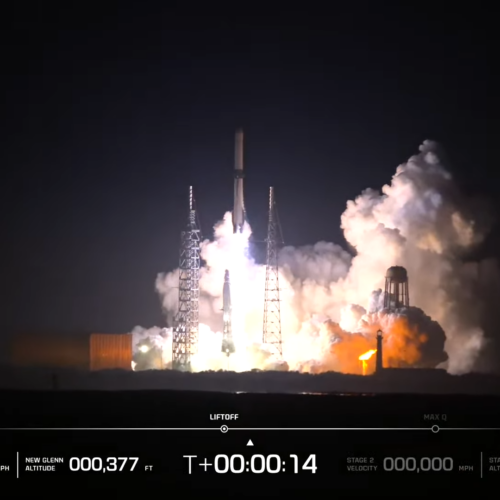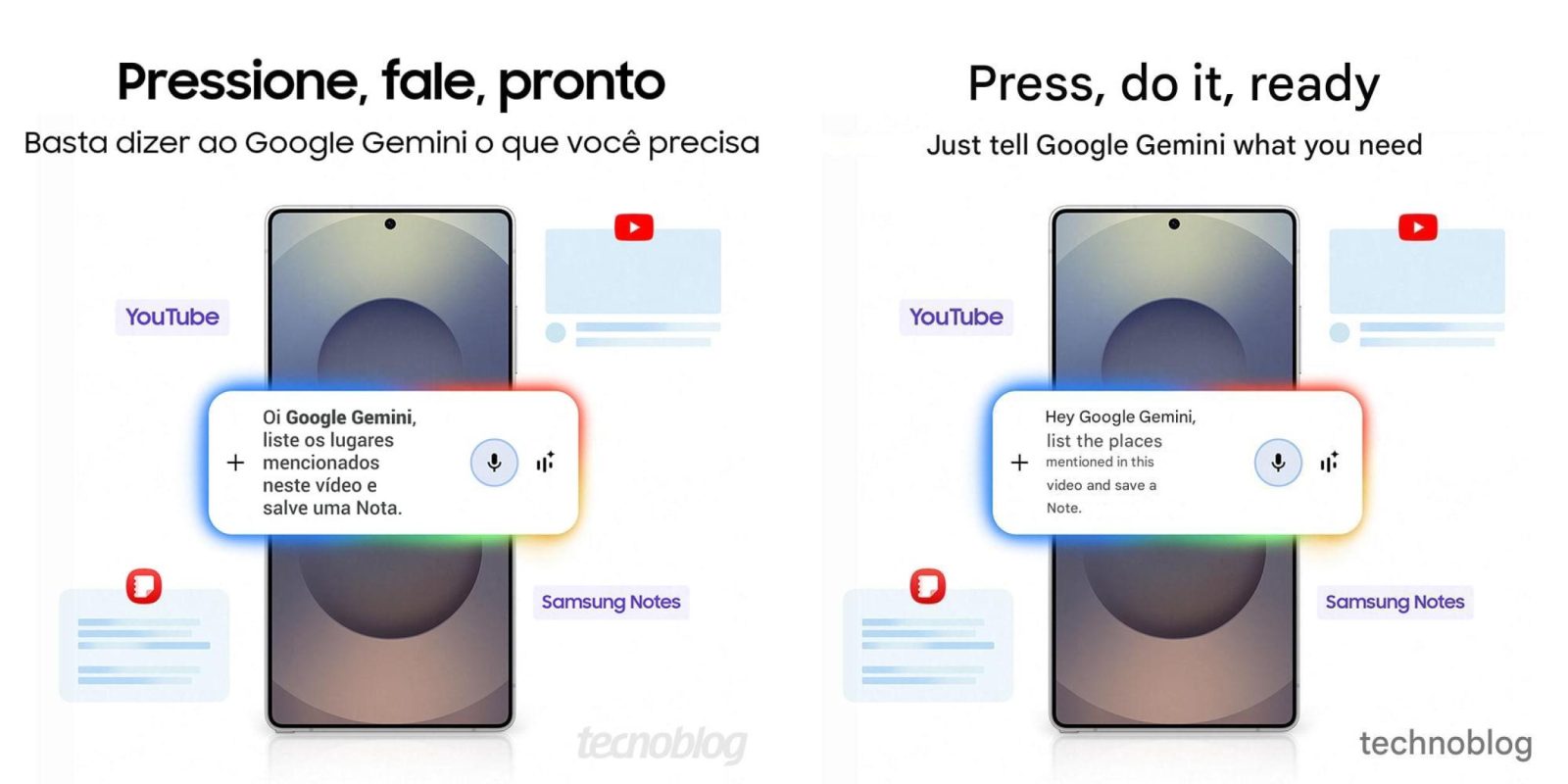Normal view
-
Latest Tech News from the Financial Post
- Apple loses smartphone crown in China as Vivo and Huawei outsell iPhone
Apple loses smartphone crown in China as Vivo and Huawei outsell iPhone
Hyperline secures $10 million for its automated billing platform
French startup Hyperline wants to build the next-generation Chargebee. Over the past two years, the startup has built a new billing platform that can be used for recurring subscriptions, one-off purchases, usage-based billing and more. Hyperline raised an initial €4 million funding round from Index Ventures back in 2023 ($4.1 million at today’s exchange rate). […]
© 2024 TechCrunch. All rights reserved. For personal use only.
-
Latest Tech News From Engadget
- Blue Origin’s New Glenn rocket launches into orbit on its maiden flight
Blue Origin’s New Glenn rocket launches into orbit on its maiden flight
Blue Origin's New Glenn rocket has successfully made it to space for its maiden flight, a few days after its planned January 13 launch was scrubbed. The vehicle passed the Kármán line, the internationally recognized boundary of space, shortly after 2AM Eastern time on January 16. New Glenn's booster separated from the rest of the rocket to make its way back to Earth towards a landing platform in the ocean by 2:10 AM, while its second stage and payload went on to reach orbit. The company has just announced on its live feed that it failed to land New Glenn's booster, but it was never the launch's primary purpose.
Dave Limp, the company's CEO, previously stressed that the mission's objective is to reach orbit. "Anything beyond that is a bonus," he wrote in a tweet. He said that landing the booster was "ambitious" but that Blue Origin is still going for it and expects to "learn a lot" from the effort. Notably, it took SpaceX three years of landing tests before it was successfully able to land Falcon 9's first stage on a drone ship in the ocean.
New Glenn is a heavy-lift launch vehicle with a booster that was designed to be reused for a minimum of 25 flights. Blue Origin describes it as its "giant, reusable rocket built for bigger things." It has a massive payload capacity and can carry more than 13 metric tons to geostationary transfer orbit (GTO) and 45 metric tons to low Earth orbit (LEO). For its maiden flight, the vehicle carried the company's Blue Ring Pathfinder, which is part of its Blue Ring platform that will offer spacecraft services to clients like the Pentagon. The mission is meant to test Blue Ring's core flight and ground systems, as well as its operational capabilities.
This article originally appeared on Engadget at https://www.engadget.com/science/space/blue-origins-new-glenn-rocket-launches-into-orbit-on-its-maiden-flight-073451555.html?src=rss
©

© Blue Origin
-
Latest Tech News from Ars Technica

- Blue Origin reaches orbit on first flight of its titanic New Glenn rocket
Blue Origin reaches orbit on first flight of its titanic New Glenn rocket
Early on Thursday morning, a Saturn V-sized rocket ignited its seven main engines, a prelude to lifting off from Earth.
But then, the New Glenn rocket didn't move.
And still, the engines produced their blue flame, furiously burning away methane.


© Blue Origin
Bezos’ Blue Origin successfully launches SpaceX rival

The billionaire space race entered a new phase today when Jeff Bezos’ Blue Origin successfully launched its 320-foot-tall New Glenn rocket this morning from Cape Canaveral in Florida.
At 2:03AM ET this morning, New Glenn’s seven reusable BE-4 engines ignited to propel the NG-1 rocket into space, with the second stage and payload reaching orbit to achieve Blue Origin’s primary mission goal.
In parallel, the first stage booster — dubbed, “So You’re Telling Me There’s A Chance” — autonomously descended to its landing platform located several hundred miles downrange in the Atlantic. As it approached the Jacklyn barge, the booster lost contact with control and stopped sending data. Blue Origin confirmed that the booster was lost during landing.
— Jeff Bezos (@JeffBezos) January 16, 2025
Nevertheless, Blue Origin’s goal for today’s uncrewed launch was for New Glenn to reach orbit. Anything beyond that would be a bonus — like activating a prototype of the Blue Ring Pathfinder payload vehicle or landing the reusable booster. “No matter what, we will learn a lot,” said Blue Origin CEO Dave Limp ahead of today’s launch.
 Image: Blue Origin
Image: Blue Origin
The launch comes after almost a decade of development and puts Elon Musk’s SpaceX on notice. New Glenn has about the same carrying capacity as SpaceX’s Falcon Heavy, and is meant to shuttle cargo into space on the reusable launch platform. This includes satellites for Blue Origin’s rival to Starlink’s high-speed low-latency internet service. The first of these 3,236 Project Kuiper satellites are expected to launch into low Earth orbit soon, aboard SpaceX’s Falcon 9 rocket before New Glenn can take over the heavy lifting.
Amazon to buy Indian BNPL startup Axio for over $150M
Amazon has agreed to acquire Indian buy-now, pay-later startup Axio, deepening its push into financial services in one of its fastest-growing markets. The e-commerce group, which has held an equity stake in Axio for six years, signed the acquisition agreement in December after completing due diligence, the Indian startup said in a blog post. Financial […]
© 2024 TechCrunch. All rights reserved. For personal use only.
Samsung Galaxy S25 leak shows new Gemini overlay, hotword, and more
Ahead of next week’s Samsung event, the Galaxy S25 leaks continue and the latest marketing reveals the Gemini experience.
more…-
Latest Tech News from CNBC
- TSMC net profit hits record high as fourth-quarter results top expectations on robust AI chip demand
TSMC net profit hits record high as fourth-quarter results top expectations on robust AI chip demand
In AI copyright case, Zuckerberg turns to YouTube for his defense
Meta CEO Mark Zuckerberg appears to have used YouTube’s battle to remove pirated content to defend his own company’s use of a data set containing copyrighted e-books, reveals newly released snippets of a deposition he gave late last year. The deposition, which was part of a complaint submitted to the court by plaintiffs’ attorneys, is […]
© 2024 TechCrunch. All rights reserved. For personal use only.
-
Digiday
- Creators fast-track efforts to rely less on platforms amid intensifying TikTok uncertainty — here’s where they’re going
Creators fast-track efforts to rely less on platforms amid intensifying TikTok uncertainty — here’s where they’re going
We want to hear your thoughts on the potential TikTok ban. Take our brief survey.
For years, TikTok creators have been trying to migrate their audiences onto other platforms — but were relatively subtle about their efforts, both due to fears that TikTok’s algorithm suppresses attempts to move users off the app and because of TikTok users’ distaste toward manipulative content.
But now, as the U.S. forges ahead with its TikTok ban that’s approaching a Jan. 19 deadline, creators have gone mask-off, growing more proactive and more explicit with their attempts to divert fans off of TikTok as a ban or sale becomes a likely reality. Even though moving followers over onto another social network isn’t easy, it shouldn’t immediately disrupt many brand deals.
Continue reading this article on digiday.com. Sign up for Digiday newsletters to get the latest on media, marketing and the future of TV.
Digiday Media events get a refresh under Liz Pitonyak’s leadership
Digiday’s events are getting a refresh under the leadership of Liz Pitonyak, who joined the company as general manager of events in December.
She joined Digiday Media with 15 years of experience in event strategy and partnership, after most recently directing event initiatives at Adweek and at Forbes. She will oversee events for Digiday, Glossy, Modern Retail and WorkLife.

“I have dedicated my career to creating transformative experiences that resonate with target audiences, amplify brand stories and deliver measurable business outcomes,” Pitonyak said.
Continue reading this article on digiday.com. Sign up for Digiday newsletters to get the latest on media, marketing and the future of TV.
Industry clutches pearls after WPP returns to office four days a week
This story originally published on sister site, WorkLife.
WPP’s announcement requiring employees to return to the office four days a week has sent shockwaves through the advertising industry, spotlighting a deepening divide between corporate-owned and independent agencies on workplace flexibility. While some leaders argue in-person collaboration fuels creativity, critics view the move as outdated and morale-crushing.
Employees have voiced frustration over the abrupt policy from the agency holding group, citing poor communication and personal challenges, with some questioning whether “creative collaboration” outweighs childcare needs or two-hour commutes. Meanwhile, independents see an opportunity to attract disillusioned talent championing flexible models that balance productivity with personal well-being.
Continue reading this article on digiday.com. Sign up for Digiday newsletters to get the latest on media, marketing and the future of TV.
Comcast tempts DTC brands away from paid social due to rising costs and brand safety issues
Entire direct-to-consumer empires have been built on the back of paid social and search advertising. But empires have to think about the long term to last.
With platforms such as Facebook and Instagram becoming more expensive and quite possibly less brand safe, Comcast hopes to tempt away DTC advertisers from those performance-focused channels and lead them toward TV and CTV inventory. Its execs hope a new ad sales platform, Universal Ads, could help convert performance marketers into long-term brand builders.
It’s a move many DTC and SME brands would welcome, according to eight media buyers working with DTC clients that spoke with Digiday. That said, it doesn’t mean a shift in DTC spend to TV is a fait accompli.
Continue reading this article on digiday.com. Sign up for Digiday newsletters to get the latest on media, marketing and the future of TV.
Media Briefing: Dotdash Meredith’s Jon Roberts on the AI agenda in 2025
This week’s Media Briefing features an interview with Dotdash Meredith’s chief innovation officer, Jon Roberts. We discuss what the company has learned nearly nine months into its deal with OpenAI and what he wants to develop with AI technology at the company this year.
- Q&A with Dotdash Meredith on AI agenda in 2025
- Media companies prepare for legal battles with Trump administration, Fortune retracts bogus story and more
Q&A with Dotdash Meredith on AI agenda in 2025
Dotdash Meredith has ambitious plans for the development of its AI-powered technology in 2025.
This is a member-exclusive article from Digiday. Continue reading it on digiday.com and subscribe to continue reading content like this.
-
Digiday
- ‘Curation can be a vacuous term’: The Trade Desk plans to redefine ad quality outside the walled gardens with Sincera
‘Curation can be a vacuous term’: The Trade Desk plans to redefine ad quality outside the walled gardens with Sincera
In advertising circles, a quiet theory has been gaining traction: The Trade Desk, it’s said, isn’t exactly enamored with curation — a targeting strategy that could redirect valuable ad spend elsewhere. This week’s acquisition of Sincera added fuel to the narrative. But The Trade Desk has dismissed the rumors outright.
As vp of inventory development Will Doherty put it plainly: “We don’t think a lot about curation.”
Instead, the deal, according to Doherty, is aimed at something far more ambitious.
Continue reading this article on digiday.com. Sign up for Digiday newsletters to get the latest on media, marketing and the future of TV.
Europe’s ‘super-regulator’ role is under threat
US defence industry braced for tech shake-up under Trump
-
Latest Tech News from the Financial Post
- TikTok’s rivals can expect revenue and user gains if US bans app



